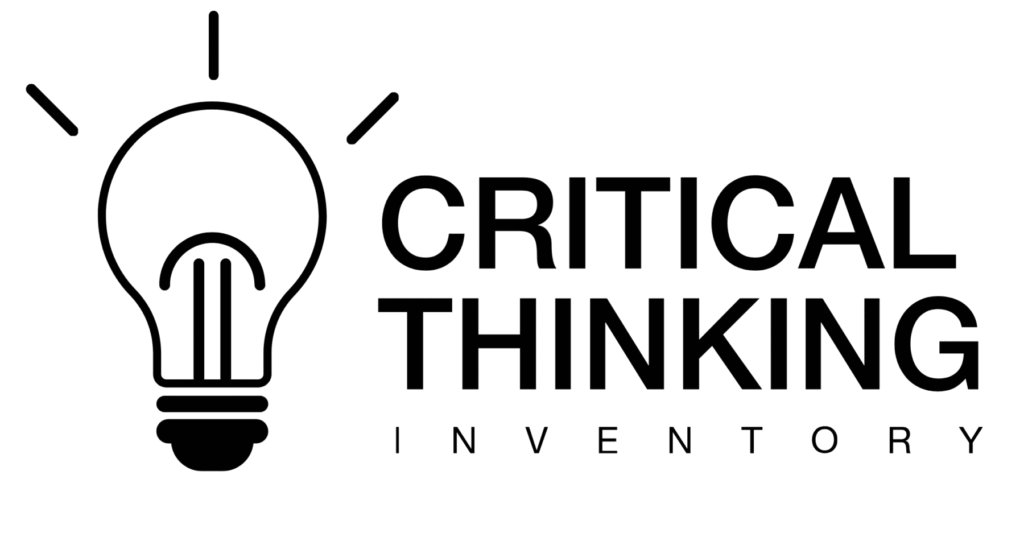
The Critical Thinking Inventory measures critical thinking style on a continuum that ranges between engaging and seeking information. While critical thinking is an important attribute for success, it is not easily defined. Neither category represents a good or bad critical thinking style but rather assists us in understanding the process we go through individually when engaged in critical thinking. We do this so your team or organization can capitalize on each other’s strengths and come up with even stronger and more innovative solutions.
Are You a Seeker?

People who score on the seeking information side of the scale are aware of their own predispositions and biases and recognize their current opinions and positions have been influenced by his or her environment and experiences. They are “hungry learners,” open to the opinions of others and take care to seek out divergent points of view. Seekers have a desire to know the truth, even if the truth conflicts with presently held beliefs and opinions.
Are You an Engager?

People who score on the engagement side of the continuum are aware of their surroundings and able to anticipate situations where good reasoning will be needed. They look for opportunities to use their reasoning skills and are confident in their ability to reason, solve problems and make decisions. They are also confident communicators and able to explain the reasoning process used to arrive at a decision or problem solution.
About the Critical Thinking Inventory
The research leading to the CTI’s development began in the early 2000s when several University of Florida Agricultural Education and Communication faculty members secured a USDA Higher Education Challenge Grant to investigate college students’ critical thinking dispositions. A few years later, a second grant was awarded to one of the same faculty members, as well as Dr. Tracy Irani, the Director of the Center for Public Issues Education (PIE Center). Irani continued the critical thinking research, partnering with Dr. Alexa Lamm, then the Associate Director of the PIE Center, and co-creating the CTI we know today which was finalized in 2011. The CTI moved to the University of Georgia and the Lamm Lab in 2025 and is now available if you are interested in using it by contacting Dr. Lamm at alamm@uga.edu.
The CTI is available in four languages – English, Spanish, French and Chinese – and has been tested around the world assisting extensionists, agricultural educators, and others in developing strong, innovative teams leading to great results when challenged with problems that do not have a right or wrong answer.

Examples of research using the CTI:
Lamm, A. J., Lu, P., Lamm, K. W., Oyugi, M. A., & Adhikari, S. (2025). A conceptual exploration of critical thinking style and learning styles: Supporting educational needs in Nepal. Journal of International Agricultural and Extension Education, 32(1). https://doi.org/10.4148/2831-5960.1451
Oyugi, M., Gibson, K. E., & Lamm, A. J. (2024). Assessing the dimensional validity and reliability of the Critical Thinking Inventory (CTI) in the Kenyan higher education system: A confirmatory factor analysis. Journal of International Agricultural and Extension Education, 31(1), 74-84. https://doi.org/10.4148/2831-5960.1150
Baker, M., Lu, P. & Lamm, A. J. (2021). Assessing the dimensional validity and reliability of the University of Florida Critical Thinking Inventory (UFCTI) in Chinese: A confirmatory factor analysis. Journal of International Agricultural and Extension Education, 28(2), 41 – 56. https://doi.org/10.5191/jiaee.2021.28341
Wu, Y., Rumble, J. N., Lamm, A. J., & Ellis, J. D. (2020). Communication of GM science: Consumers’ critical thinking style, perceived transparency of information, and attitude. Journal of International Agricultural and Extension Education, 27(2), 49-61. https://doi.org/10.5191/jiaee.2020.27249
Akins, J. L., Lamm, A. J., Telg, R. W., Abrams, K., Meyers, C., & Raulerson, B. (2019). Seeking and engaging: Case study integration to enhance critical thinking about issues. Journal of Agricultural Education, 60(3), 97 – 108. https://doi.org/10.5032/jae.2019.03097
Leal, A., Rumble, J. N., & Lamm, A. J. (2017). Using critical thinking styles to inform food safety behavior communication campaigns. Journal of Applied Communications, 101(2), 19 – 32. https://doi.org/10.4148/1051-0834.1002
Putnam, B., Lamm, A. J., & Lundy, K. (2017). Using critical thinking styles of opinion leaders to drive extension communication. Journal of Agricultural Education, 58(3), 323-337. https://doi.org/10.5032/jae.2017.03323
CTI Instrument
If you would like to download the CTI instrument, you can do so here. We ask that you please cite the authors in any subsequent work.
CTI Manual
The CTI development team welcomes educators and researchers the opportunity to use the CTI in broader contexts. You can find the CTI manual here with details regarding its development, testing, and use. Please contact Dr. Alexa Lamm, alamm@uga.edu, to obtain the resources needed to score the instrument correctly.